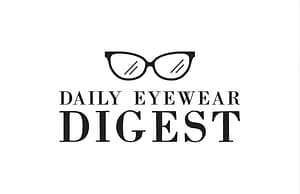Clear vision is something many of us take for granted, but how often do we really consider the health of our eyes? Regular eye exams are crucial for maintaining optimal vision and catching potential problems early. Yet, many subtle signs of vision issues often go unnoticed. This article will explore those signs and highlight the importance of regular eye check-ups.
Subtle Signs of Vision Problems
Difficulty Reading Small Print
If you find yourself holding books or your phone further away to read small print, it could be a sign of presbyopia, an age-related condition where the eye’s lens stiffens and makes it harder to focus on close objects.
Frequent Headaches
Frequent headaches, particularly after long periods of reading or screen time, can be a sign of eye strain. This occurs when your eyes work harder than usual, often due to uncorrected vision problems.
Eye Strain and Fatigue
Feeling tired after short periods of reading or computer work may indicate that your eyes are straining to see clearly. This can also manifest as a burning sensation or dryness in the eyes.
Blurred or Double Vision
Experiencing blurred or double vision, even temporarily, is a clear sign that you should see an eye specialist. These symptoms can be associated with various vision problems, including astigmatism and more serious conditions.
Squinting or Tilting Head
If you notice that you’re frequently squinting or tilting your head to see better, it could indicate a vision issue. Squinting helps to temporarily improve focus, but it’s not a solution to underlying problems.
Trouble Seeing at Night
Difficulty seeing in low light or at night, known as nyctalopia, can be an early sign of cataracts or other vision impairments. It’s important to address these symptoms with an eye exam.
Sensitivity to Light
Increased sensitivity to light, or photophobia, can be a sign of several eye conditions, including inflammation or corneal issues. This discomfort should not be ignored.
Seeing Halos or Glare
Seeing halos around lights or excessive glare can indicate vision problems such as cataracts or glaucoma. An eye exam can determine the cause and appropriate treatment.
Difficulty with Peripheral Vision
Struggling to see objects out of the corner of your eye might be a sign of glaucoma or other serious eye conditions that affect peripheral vision.
Losing Place While Reading
If you often lose your place while reading or need to use a finger to track your position, it could be a sign of an undiagnosed vision problem, such as binocular vision dysfunction.
Common Causes of Vision Problems
Refractive Errors
The most common vision problems are refractive errors, including nearsightedness, farsightedness, and astigmatism. These issues arise when the shape of your eye prevents light from focusing directly on the retina.
Age-Related Vision Changes
As we age, our vision naturally changes. Conditions like presbyopia, cataracts, and macular degeneration are more common in older adults and require regular monitoring.
Digital Eye Strain
Prolonged screen time can lead to digital eye strain, characterized by dry eyes, headaches, and blurred vision. This is increasingly common in our digital age.
Underlying Health Conditions
Diseases such as diabetes and hypertension can affect eye health. Diabetic retinopathy, for instance, is a common complication of diabetes that impacts vision.
Eye Injuries
Injuries to the eye, even minor ones, can lead to long-term vision problems. It’s crucial to seek medical attention for any eye injury to prevent complications.
Genetic Factors
Many eye conditions, including glaucoma and macular degeneration, can be hereditary. Knowing your family history can help in early detection and treatment.
Importance of Early Detection
Preventing Further Vision Loss
Early detection of vision problems can prevent further deterioration. Regular eye exams allow for the timely treatment of conditions before they worsen.
Improving Quality of Life
Correcting vision problems can significantly improve your quality of life. Clear vision enhances daily activities and reduces the risk of accidents and injuries.
Early Treatment of Eye Diseases
Conditions like glaucoma and macular degeneration benefit from early treatment. Regular eye exams ensure these diseases are caught early, when treatment is most effective.
When to Schedule an Eye Exam
Recommended Frequency
Adults should have an eye exam every two years, or annually if they have existing vision problems or risk factors. Children should have regular check-ups to monitor their vision as they grow.
Specific Symptoms to Watch For
If you experience any of the subtle signs mentioned, it’s important to schedule an eye exam promptly. Addressing symptoms early can prevent long-term damage.
What to Expect During an Eye Exam
Vision Tests
An eye exam typically includes various tests to measure your vision clarity, including reading charts and using lenses to determine your prescription.
Eye Health Assessments
Your optometrist will also examine the health of your eyes, checking for signs of diseases such as glaucoma, cataracts, and retinal issues.
Discussing Results with Your Optometrist
After the exam, your optometrist will discuss the results with you and recommend any necessary treatments or corrective measures, such as glasses or contact lenses.
Tips for Maintaining Eye Health
Healthy Diet
A diet rich in fruits, vegetables, and omega-3 fatty acids can promote good eye health. Nutrients like vitamin C, vitamin E, and zinc are particularly beneficial.
Reducing Screen Time
Limiting screen time and taking regular breaks can help reduce digital eye strain. The 20-20-20 rule—taking a 20-second break every 20 minutes to look at something 20 feet away—can be effective.
Wearing Sunglasses
Protect your eyes from harmful UV rays by wearing sunglasses outdoors. Look for glasses that block 100% of UVA and UVB rays.
Regular Eye Exercises
Eye exercises can help maintain good vision and reduce eye strain. Simple exercises, such as focusing on distant objects, can be beneficial.
FAQ
Can headaches be a sign of vision problems?
Yes, frequent headaches can be a sign of vision problems, especially if they occur after reading or using digital devices for extended periods.
How often should I have an eye exam?
Adults should have an eye exam every two years, or annually if they have existing vision problems or risk factors.
Are vision problems hereditary?
Many vision problems, such as glaucoma and macular degeneration, can be hereditary. Knowing your family history can help with early detection.
What is digital eye strain?
Digital eye strain is discomfort experienced after prolonged screen time. Symptoms include dry eyes, headaches, and blurred vision.
Can vision problems be corrected?
Many vision problems can be corrected with glasses, contact lenses, or surgery. Early detection and treatment are crucial.
What are common eye diseases to watch out for?
Common eye diseases include glaucoma, cataracts, macular degeneration, and diabetic retinopathy. Regular eye exams can help detect these conditions early.
Conclusion
Taking charge of your eye health is essential for maintaining clear vision and preventing potential problems. Regular eye exams can detect subtle signs of vision issues, ensuring timely treatment and improved quality of life. Don’t wait for noticeable symptoms—schedule an eye exam today and keep your vision as clear as possible.

